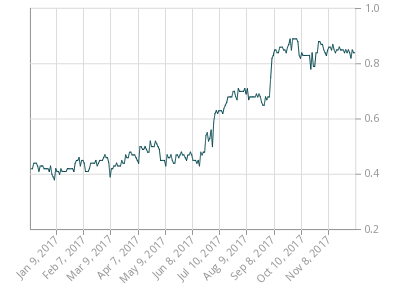The Ginnie Mae CUSIP aggregation program started in March 2019 and was completed in July 2019 and the Desk combined roughly 8,000 specific CUSIPs into about 8 aggregated ones. The aggregation procedure was designed to minimize administrative expenses and operational intricacies related to the Federal Reserve's company MBS portfolio using an uncomplicated and rules-based method that is constant with market.
working goals and basic market practices. Other The New York Fed releases comprehensive data on all settled SOMA agency MBS holdings on its on a weekly basis. In addition, Fannie Mae, Freddie Mac, and Ginnie Mae supply information about aggregated CUSIPs, including the underlying company MBS, on their public sites. Yes. Details about private Fannie Mae, Freddie Mac, and Ginnie Mae agency MBS CUSIPs underlying the Federal Reserve's aggregated CUSIPs will remain available on these companies' public sites.
's recently enforced restriction on repooling of reperforming forborne loans yet once again penalizes servicers serving as vital service suppliers in the continuing efforts to protect debtors dealing with financial difficulty due to COVID-19. Let me count a few of the ways Ginnie Mae servicers are bearing the impact of debtor forbearance under the CARES Act: no maintenance charge income throughout forbearance of up to a year( and possibly longer must Congress decide its required); no remedy for advance requirements for the duration of such forbearance; no revision of the structural impediments to personal financing to fund advances; and no compensation for the expense of funds for advances. In releasing APM-20-07 on June 29, 2020, Ginnie Mae chose to even more protect financiers from the prospective enhanced prepayment threat arising from early swimming pool buyouts of forborne loans. This protection, however, comes at the expense of servicers. By limiting servicers from counting on long-standing, genuine company activity early swimming pool buyouts paired with the repooling of reperforming loans Ginnie Click here! Mae has actually elected to deem a routine activity as inappropriate due to the fact that it is unnecessary and, gosh, might produce an earnings. This commitment lasts until the defaulted loan is purchased out.
loan secured by the mortgaged home, the earnings of which are used to bring the loan present. By using a junior lien, the loan does not need to be modified. Presently, a servicer might accomplish a" stand alone partial claim" or a" home loan healing advance" without buying the delinquent loan from the pool, but servicers routinely integrate the allowable early buyout of an overdue loan, a reinstatement through a" stand alone partial claim" or" home loan healing advance, "and a repooling of the reperforming loan into recently released securities. Initially, the debtor under a reperforming loan should have made prompt payments for the six months immediately preceding the month in which the associated mortgage-backed securities are released.
Second, the concern date of the mortgage-backed securities must be at least 210 days from the last date the loan was overdue." Reperforming Loans "are not limited to loans that are reinstated through a" http://www.rfdtv.com/story/43143561/wesley-financial-group-responds-to-legitimacy-accusations stand alone partial claim" or "mortgage recovery advance." The term is broadly defined to be a loan that is not more than thirty days overdue, previously was purchased out of a Ginnie Mae pool, and has the same rate and terms as the initially pooled loans. The APM just means the reason behind Ginnie Mae's modification in position, mentioning that "Ginnie Mae looks for to guarantee that transactional activity associated with these choices does not impair market self-confidence in Ginnie Mae securities. "It highlights that FHA's "Stand Alone Partial Claim" and USDA's "Home mortgage Healing Advance" do not require swimming pool repurchases unless the regards to.

The What Is The Going Rate On 20 Year Mortgages In Kentucky PDFs
the loan require modification. Basically, Ginnie Mae is denying servicers of an enduring, genuine, elective company technique under the Ginnie Mae program obviously since this discretionary activity is not necessary to allow a servicer to cease servicing advances in respect of forbearance. Generating a profit from repooling reperforming loans somehow is considered as a wicked activity. In seclusion, insulating investors in Ginnie Mae securities from enhanced prepayment threat connecting to forbearance definitely is a worthwhile public policy goal. When compared to the expenses, expenditures and lost revenue servicers are bearing in regard of forbearance, one has to question whether Ginnie Mae is relatively stabilizing the interests of servicers and investors.
While Ginnie Mae may have the authority to modify the Mortgage-Backed Securities Guide from time to time, servicers have a right to reasonably rely on the standard construct of the program without product unfavorable modifications not grounded in law or abuse. Servicers produce, acquire and finance their Ginnie Mae MSRs based on this affordable expectation. When you wish to have a good time in the sun right in.
your backyard, a swimming pool of your own may be paradise. A swimming pool includes a large rate tag, though, so be prepared to spend for it with time. While you have a couple of different options, one of the easiest is to fund a new pool with a brand-new home loan. First, get in touch with the lender with which you have your existing mortgage to ask about a new mortgage.
Typically your present loan provider will aspire to retain your financing, potentially providing attractive interest and terms. how many mortgages in one fannie mae. Note the terms provided by your existing lending institution. Approach two or three other lending institutions to ask about a brand-new home mortgage. With a brand-new lending institution, you will need to reveal proof of identity and income, service warranty deed and homeowner's insurance coverage. The brand-new lending institution will investigate your credit and.
check the worth of your home throughout a prequalification procedure. After confirming your info and evaluating your creditworthiness, the lender might extend you prequalification status.